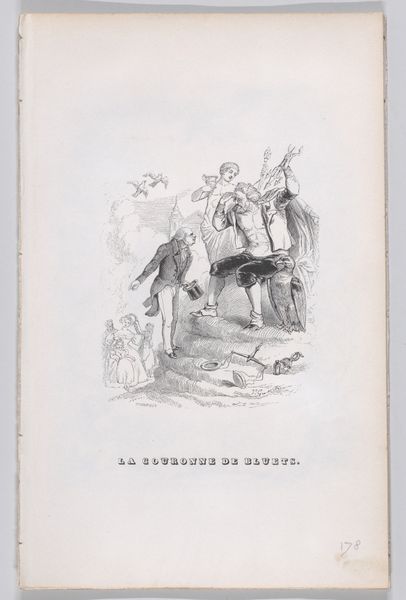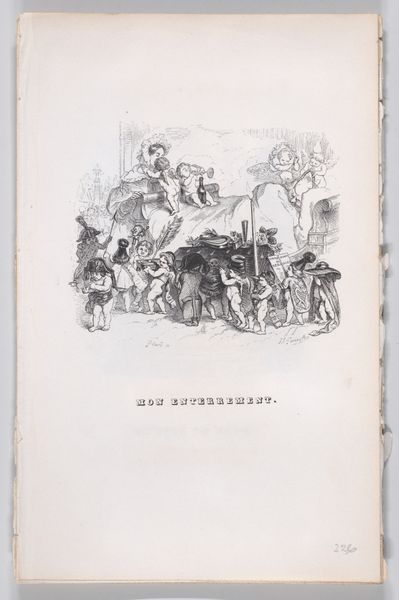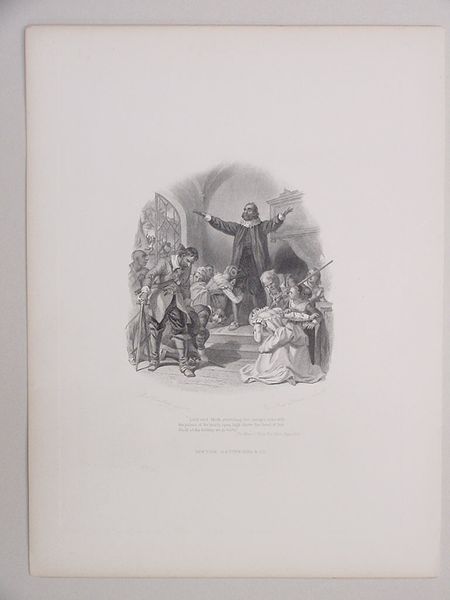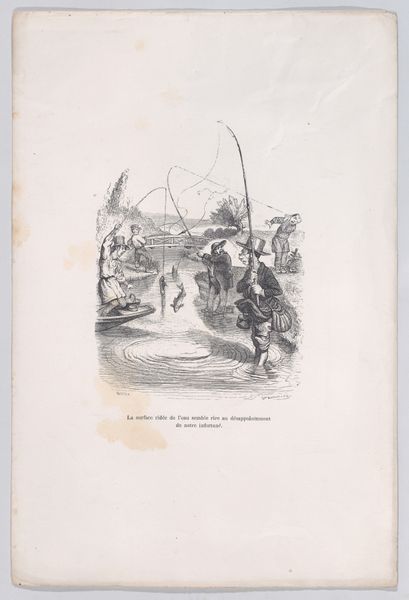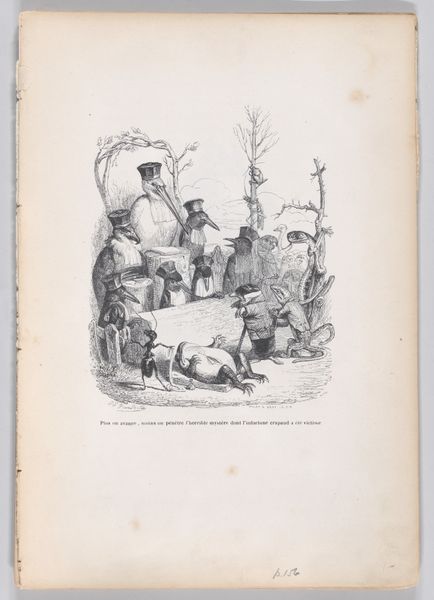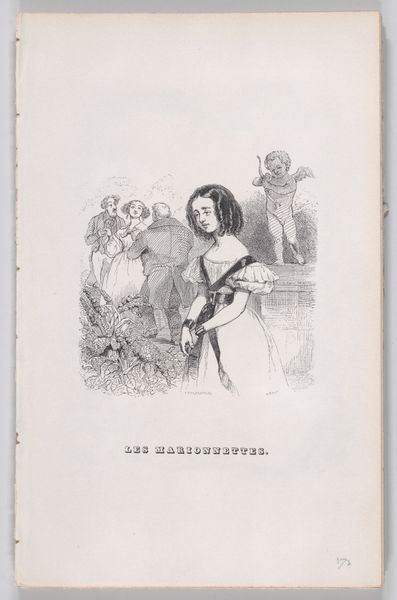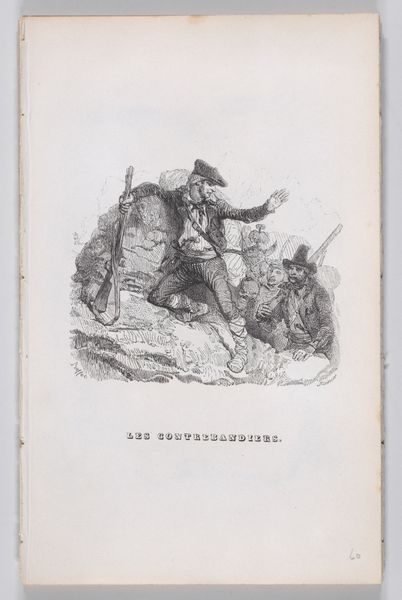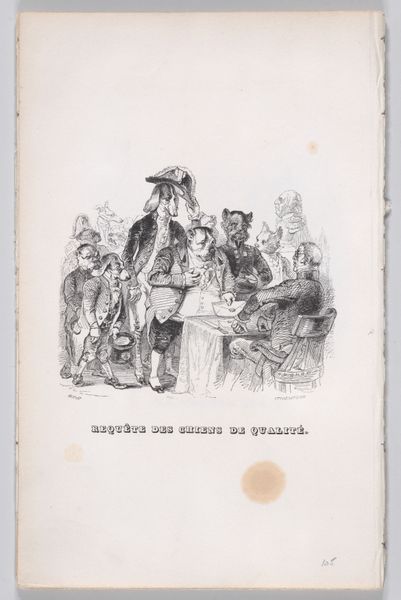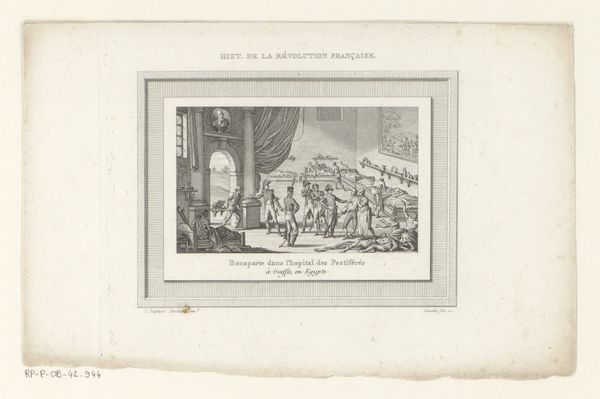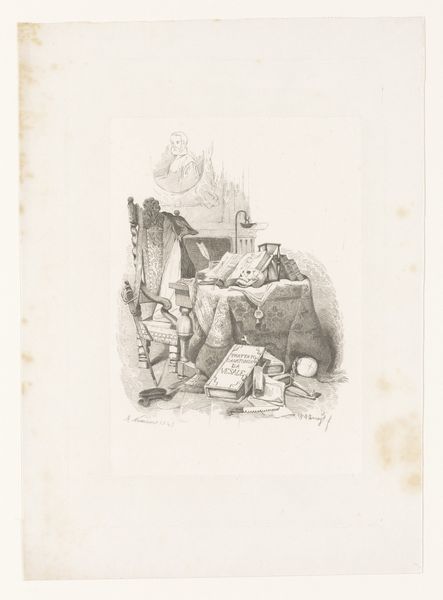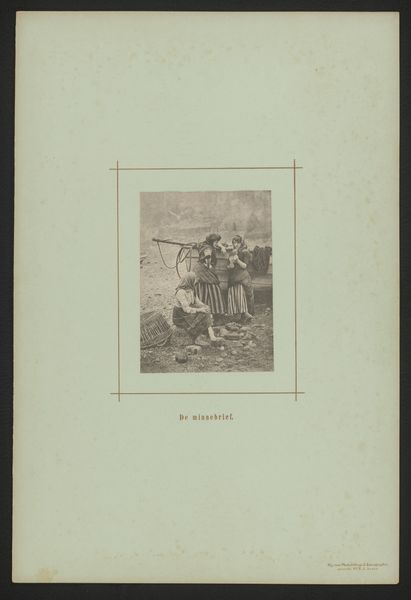
"Nebuchadnezzar" from The Complete Works of Béranger 1836
0:00
0:00
drawing, print, engraving
#
drawing
# print
#
history-painting
#
engraving
Dimensions: Sheet: 8 5/8 × 5 1/2 in. (21.9 × 14 cm)
Copyright: Public Domain
Curator: Ah, here we have "Nebuchadnezzar," an engraving from 1836 by J.J. Grandville, and part of "The Complete Works of Béranger," currently residing at The Met. The artist uses a rather comical approach in addressing historical and political themes. Editor: Well, it certainly doesn’t scream "regal." More like a… well, a staged school play. I see people playing instruments with comical expressions while staring into large musical sheets and a king on his throne with a baby's head on a grown man's body. Curator: Exactly. Grandville was known for his anthropomorphic satire. Here, the reference to Nebuchadnezzar is not a straight historical depiction but a commentary on contemporary French politics, particularly the monarchy of Louis-Philippe. Béranger’s works themselves were quite politically charged, often critical of the regime. Editor: So, Nebuchadnezzar is, in this instance, not really Nebuchadnezzar but an allegory for French royalty? Makes the king even more pathetic, as he seems oblivious, lost in his luxurious chair. I find it interesting how the artist emphasizes these weird harps on both sides of the ensemble. Is it perhaps implying some dissonance between the arts and the monarchy? Curator: That's a brilliant insight. The harps flanking the central figures could indeed represent the forced harmony, or rather the lack thereof, between the arts and the monarchy. Remember, this print appeared amidst censorship and control over artistic expression. Editor: This feels surprisingly subversive for something hanging in the Met. I guess political art has a knack for longevity, if it speaks about social issues still resonant after generations. Curator: Indeed. This image captures a very specific moment in French history, but the broader theme of power, authority, and artistic suppression continues to resonate. It serves as a reminder of the complex relationship between art and the political landscape. Editor: Looking at it again, the apparent ridiculousness makes its seriousness even more haunting. I find it hard to shake off the image, despite its weird, almost playful rendering. Curator: Precisely, that’s the brilliance of Grandville’s approach: to use humor as a vehicle for social criticism. It encourages the viewer to delve deeper into the underlying themes of political commentary.
Comments
No comments
Be the first to comment and join the conversation on the ultimate creative platform.
